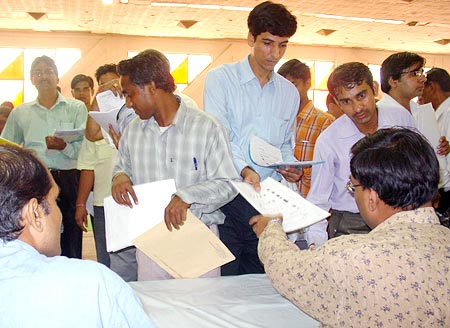
Union Finance Minister Pranab Mukherjee on February 26, 2010 presented the Annual Budget, proposing simplifying the task of filing IT returns for individuals. Following this, the Central Board of Direct Taxes (CBDT) notified the New ITR-1 form applicable for FY 2009-10 (assessment year 2010-11).
The format is easier, reader-friendly and is in itself a do-it-yourself guide for taxpayers. Let's take a look at the amended changes and what it means to individuals.
Who it affects and who doesn't
Who can use ITR-1? Individuals whose total income includes:
Who can not use ITR-1? Individuals whose total income includes:

Income from one house property has now been included into ITR-1 (the new form), which was not the case earlier. In the previous form, an individual having income under the head 'House Property', was required to fill in a different form (ITR-II), which required more information and details to be filled in.
Incomes from other sources has now been covered under the new ITR-1 -- which includes interest income and family pension.
No document needs to be attached to the new ITR-1 form, meaning less paperwork for you the tax-payer.

TT has notified that the return form can be filed with the IT department in any of the following ways:
For further details, you may visit www.incometaxindiaefiling.gov.in.
Conclusion
At the outset, the new ITR-1 form is chiefly useful for individuals having income from salary, one house property (excluding loss brought forward from previous years), and income from other sources (excluding winning from lottery and race horses).
The form also allows filling in details regarding Advance Tax and Self-Assessment Tax transactions reported through Annual Information Return (AIR). It is less-cumbersome in the sense that there are fewer details that need to be filled (unlike past forms).